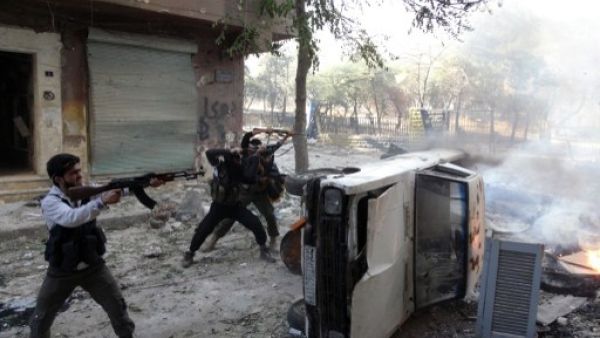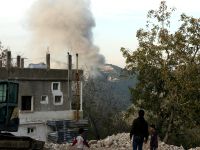Which is the more dangerous indicator: indirect economic losses of almost $10 billion due to the Syrian crisis or paying $25 billion for "debt service" in the past seven years? The answer determines how to formulate future economic scenarios for Lebanon.
Lebanon’s "national unity" government – being concocted domestically and internationally – will only live for 4 months, until the election of a new president in May (if even that happens). But this government remains vital for the containment of the country’s continuous economic deterioration, or even to infuse some optimism, the Lebanese way. In short, this is what could be deduced from an Institute of International Finance paper published last week, titled "Lebanon: Improved Security Key to Growth Revival."
The experts point to "the formation of a [national] unity government" as a main prerequisite for economic recovery. But what does recovery mean? IIF experts George Abed, Garbis Iradian, and Amanda Preston suggest two principal scenarios for the next phase, based on the possibility of achieving a breakthrough on the level of local political administration or lack thereof; in other words, the possibility to form a national unity government.
The first scenario is based on the premise of the inability to form a new government and the continuation of security incidents witnessed by the country, against the backdrop of the Syrian crisis, such as the rounds of fighting in Tripoli, the car bombs and suicide bombers, and secondary events that could keep tourists away.
Such a scenario might seem disastrous. In this context, growth will be kept below 1 percent. Even worse, the "fiscal deficit would widen further to about 12 percent of GDP [and] the government debt-to-GDP ratio would increase further to 157 percent by 2015."
"Under this scenario, a sharp drop in the liquidity of the banking system (an unlikely scenario) could pose a major risk to the sustainability of the public debt," the report continues. It notes that bank deposits in Lebanon need to grow by at least 5 percent a year to ensure the financing of the government and the private sector.
The second scenario assumes "the formation of a new unity government before the end of this month, the progress of recent negotiations between the international community and Iran creating conditions that could lead to a halt in the Syrian civil war, which could help ease tensions in Lebanon, and significant improvement in the domestic security situation."
Here, the prognosis is completely reversed. "Real growth would accelerate to 5% in 2014 and 6% in 2015. Government revenues would recover, leading to ... a shift in the primary balance from a deficit ... to a surplus.”
The country is forced to glorify this debt and pay its unjust tax imposed by a regional and international system, which took hold of the country. It is the second biggest item in public expenditures, after wages and salaries.The experts point to "the formation of a [national] unity government" as a main prerequisite for economic recovery. But what does recovery mean? How does the "international community" assess the health of a particular economy?
Let us start with the hotter topic. Practically, a particular figure emerged from the report and was used prominently, just like similar figures are usually consumed following every international report based on purely mathematical models. Losses from the Syrian crisis in the past year reached $9.7 billion, or more than $3.2 billion a year.
To clarify, this money did not come out of anyone's coffer. Although it is a real deficit and led to the loss of jobs domestically and increased immigration, ultimately, it was unachieved growth. This economic hemorrhage will continue if local and regional political givens are not put in order and if the country does not calm down security-wise. However, it is not the major loss, which should be highlighted, during and after the Syrian crisis.
In fact, the report reminds us of a very important figure, which has more important connotations that any other indicator: the interest paid to service the debt in the past years.
Between 2007 and 2013, interest paid on Lebanese public debt was more that $25 billion. This money came out of the pockets of Lebanese citizens – whether under unity governments or unilateral governments – for the benefit of institutions, which history has shown are nothing but cartels of businessmen and interests that will never tire of sucking the blood of unfortunate societies.
Today, international experts point out that although the country is not yet feeling the brunt of the financial crisis, the size of the debt relative to the size of the economy is back to inflation (see table). The country is forced to glorify this debt and pay its unjust tax imposed by a regional and international system, which took hold of the country. It is the second biggest item in public expenditures, after wages and salaries.
It links the recovery of Lebanon, post-Syrian crisis, with its ability to service its debt. IIF calls upon us to put the country back on the pre-Daraa track. "Despite frequent political turmoil, the country has never defaulted on its debt or missed a coupon payment," the report is proud to say. It links the recovery of Lebanon, post-Syrian crisis, with its ability to service its debt.
Along with this analysis, the report includes the regular batch of accolades. It blesses the ability of the army of immigrant Lebanese and of the Central Bank of Lebanon, in particular, to protect the economy from collapse. Foreign currency reserves are at $37 billion, supported by 9.22 million ounces of gold, valued at $11.5 billion.
But what is the use of all of this if "Lebanon’s statistical base [prepared by the Central Administration for Statistics, the Finance Ministry, and the Central Bank] is one of the weakest in the region," in the report's own words.
Assuming the second scenario will linger in the long term. How could a country administer its future if the accounts of its decision-making circles are a "number soup”? How is it possible that nobody was able to organize Lebanon's finances in the past 25 years? (It should be clear for any rational person that the mess in accounts is required. Even the price inflation indicator used to correct salaries was dropped by the precious Council of Ministers in early 2013.)
"Funding risks remain low as most Lebanese banks have one of the lowest loan-to-deposit ratios among emerging economies," the report reassures us.
But what would that mean if it is directed to service clientelist capitalism, benefitting a particular class through various channels, where the banks are considered the most prominent? Such banks have already benefitted from central bank facilities to the amount of $1.7 billion, which were almost free (only 1 percent interest) in 2013 and are expected to receive a further $800 million this year.
These are the real questions, which should be addressed by the IIF's report or any institution that wants to review the prospects for Lebanon, before, during, and after the Syrian crisis.
By Hassan Chakrani








